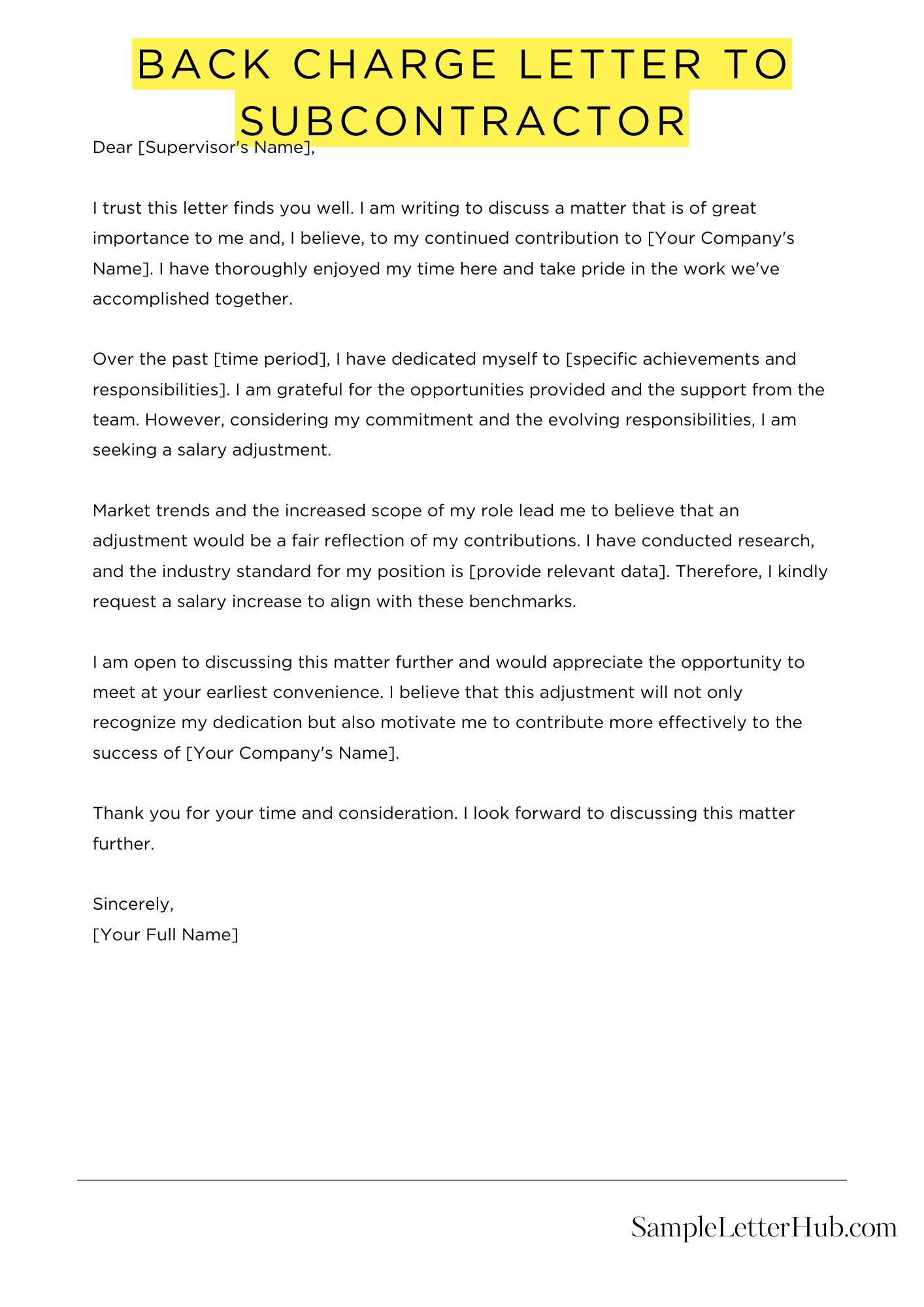A back charge letter to a subcontractor is a formal document that outlines the costs that a general contractor is seeking to recover from a subcontractor due to the subcontractor’s failure to fulfill their contractual obligations. These costs may include additional labor, materials, or expenses incurred by the general contractor as a result of the subcontractor’s breach of contract.
In this article, we will provide you with templates, examples, and samples of back charge letters to subcontractors. These templates and examples will help you to draft a clear and concise back charge letter that will effectively communicate your claims to the subcontractor.
Back Charge Letter To Subcontractor
Dear [Subcontractor Name],
We are writing to inform you of a back charge for unforeseen expenses incurred during the recent project at [Project Address].
The original contract between us specified that you were responsible for [Subcontractor’s Responsibilities]. However, during the course of the project, we encountered unexpected challenges that were not covered by the contract.
These challenges included [List of Unforeseen Expenses]. As a result, we incurred additional costs of [Amount].
We have reviewed the contract carefully and determined that these expenses are outside the scope of your responsibilities. Therefore, we believe it is fair and reasonable to request a back charge for these costs.
We would appreciate it if you could review the attached documentation and remit payment for the back charge amount within [Number] days of receipt of this letter.
We value our relationship with you and hope that this matter can be resolved amicably. If you have any questions or concerns, please do not hesitate to contact us.
Thank you for your attention to this matter.
Sincerely,
[Your Name]

How to Write a Back Charge Letter to a Subcontractor
A back charge letter is a formal document sent by a general contractor to a subcontractor to recover costs incurred due to the subcontractor’s breach of contract or poor performance.
1. State the Purpose of the Letter
Begin the letter by clearly stating that it is a back charge letter and specifying the project and contract in question.
2. Describe the Subcontractor’s Breach
Provide detailed information about the subcontractor’s breach of contract or poor performance. Include specific examples and documentation to support your claims.
3. Quantify the Costs Incurred
Calculate and list the exact costs incurred by the general contractor as a result of the subcontractor’s actions. This may include labor, materials, equipment, and any other expenses.
4. Provide Evidence and Documentation
Attach copies of relevant documents, such as contracts, invoices, and correspondence, to support your claims and quantify the costs incurred.
5. Request Payment
Clearly state the amount of money being back charged to the subcontractor and the payment terms. Specify the due date and method of payment.
6. Outline Consequences of Non-Payment
Inform the subcontractor of the potential consequences of failing to pay the back charge, such as legal action or termination of the contract.
7. Conclusion
End the letter by reiterating the request for payment and emphasizing the importance of resolving the matter promptly. Express your willingness to discuss the issue further and find a mutually acceptable solution.
FAQs about Back Charge Letter To Subcontractor
What is a back charge letter?
A back charge letter is a formal document sent by a general contractor to a subcontractor, requesting reimbursement for additional costs incurred due to the subcontractor’s breach of contract or failure to perform as agreed.
When should a back charge letter be sent?
A back charge letter should be sent as soon as possible after the general contractor incurs additional costs due to the subcontractor’s actions or omissions.
What should be included in a back charge letter?
A back charge letter should include a detailed description of the additional costs incurred, the reason for the costs, and a demand for reimbursement.
How should a back charge letter be sent?
A back charge letter should be sent by certified mail or hand-delivered to the subcontractor’s registered agent.
What are the potential consequences of not paying a back charge?
If a subcontractor fails to pay a back charge, the general contractor may take legal action to recover the costs, including filing a lawsuit or placing a lien on the subcontractor’s property.

